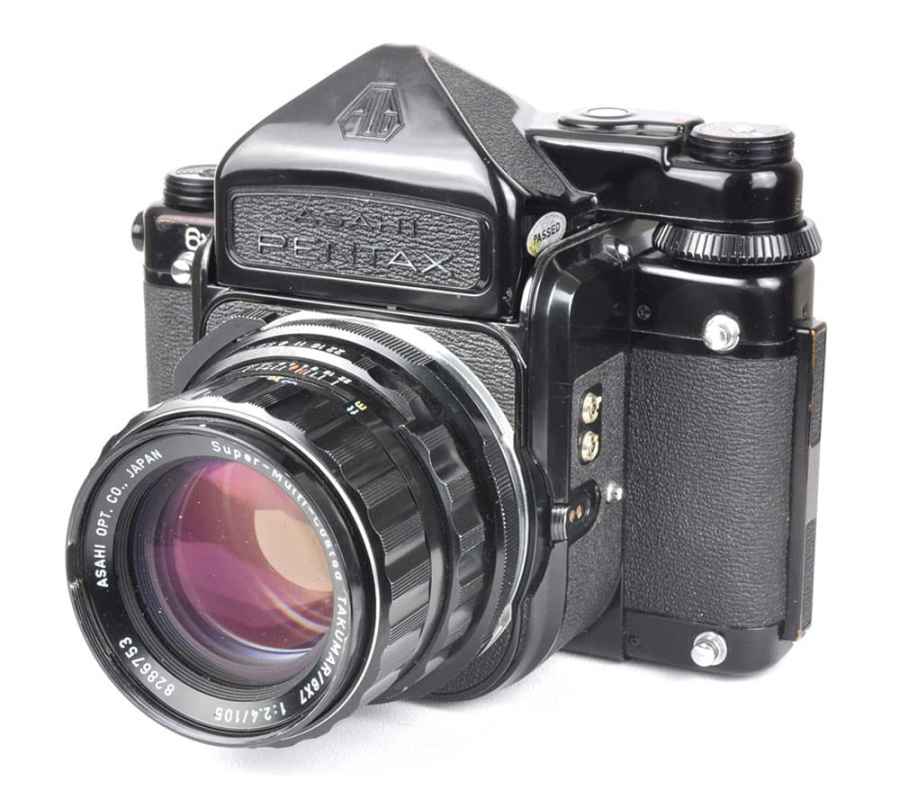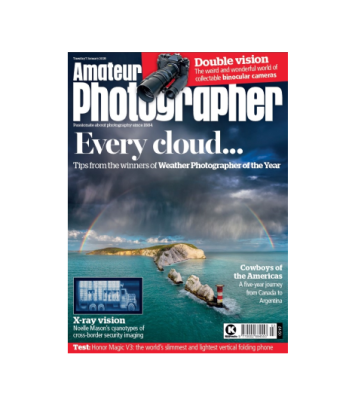News earlier this year that a Leica had sold at auction for a record-breaking 72.4 million (around £2.1 million) might make you think you need to be super-rich to buy vintage cameras. Not so. This was an extremely rare preproduction prototype. Back in the real world you can find vintage film cameras to suit every pocket, whether you are a collector, a user, or a little of both. Collectors buy cameras for their historic value or unusual features. Photographers buy cameras to shoot pictures. But there is a place where the two worlds meet. Here’s a selection of the kind of affordable vintage cameras that collectors collect and users use.
Vintage cameras under £50
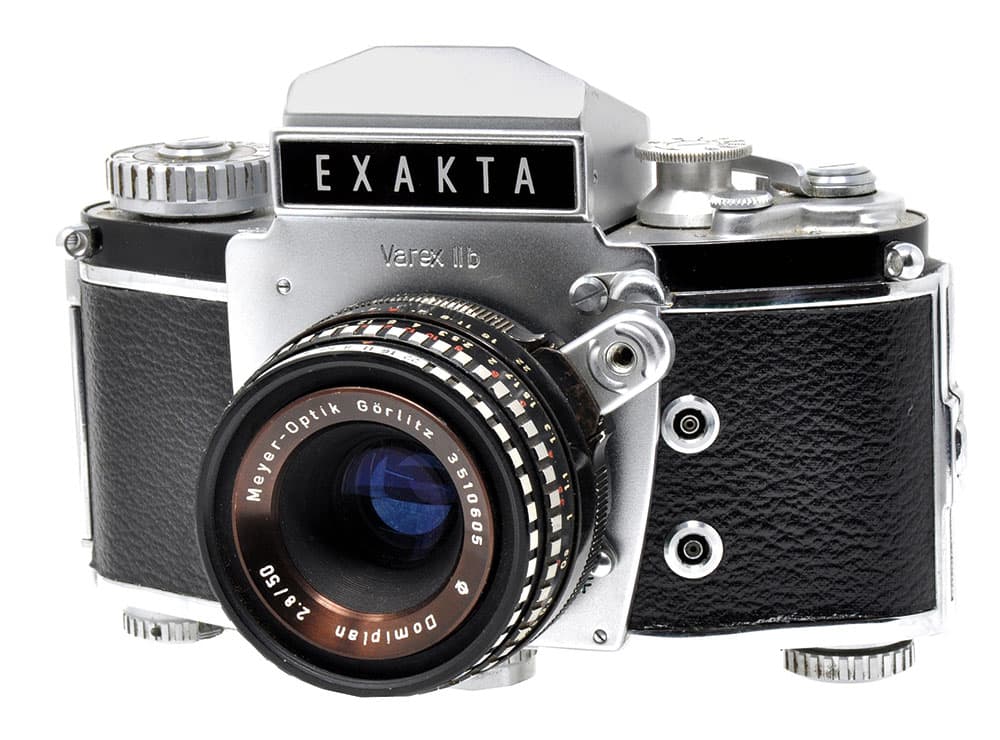
Exakta Varex IIb with Domiplan standard lens
Exakta Varex IIb
- Launched 1963
- Guide price £30-£40
Maybe you fancy the idea of a 35mm single lens reflex (SLR). There are plenty of Prakticas and Zenits around for less than £50, but what about a more prestigious name like this Exakta? It sports a 50mm f/2.8 Domiplan lens, interchangeable with a vast range of different focal lengths. Accessories include eye-level or waist-level viewfinders. The camera also shares an interesting feature with other Exaktas: the ability to couple the shutter speed dial with the delayed action control to produce slow speeds up to 12 seconds.
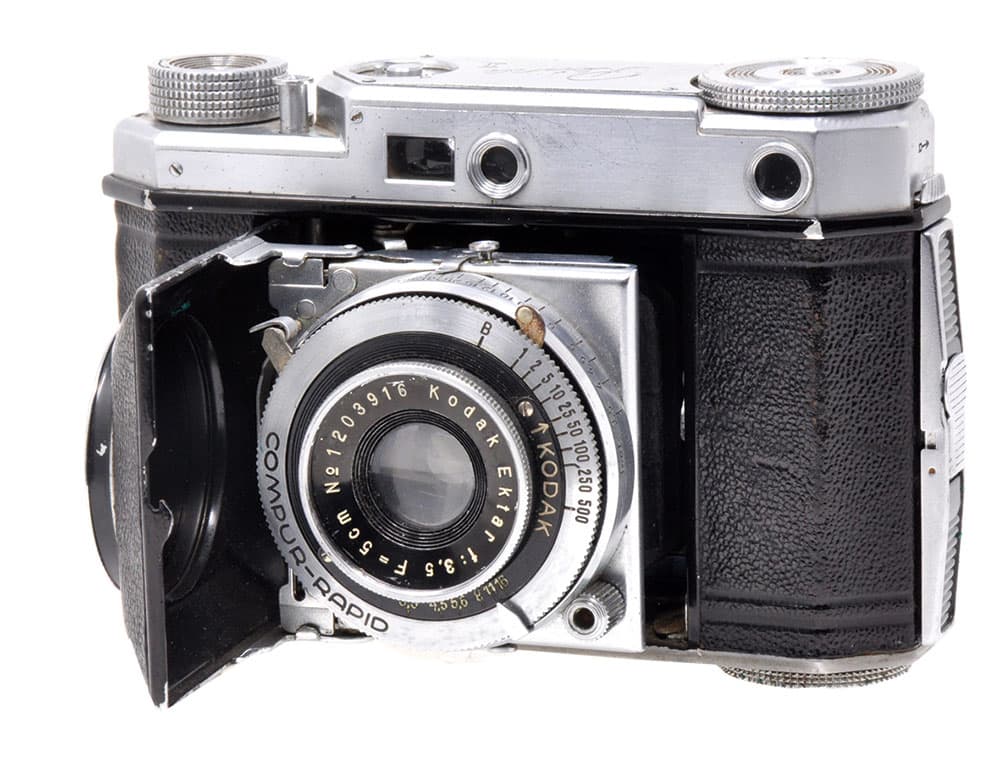
Retina II folding 35mm camera
Kodak Retina II
- Launched 1936
- Guide price £35-£45
When Kodak introduced the Retina in 1934, it made expensive 35mm photography more affordable for the masses. By the time the Retina II was launched two years later, it had developed into a quality 35mm camera that folded into a pocket-sized package and stood its ground against the likes of Leica and Contax. There were several variations. This one is the Type 142, with coupled rangefinder, Kodak Ektar 5cm f/3.5 lens focusing from 3.5ft to infinity and Compur-Rapid shutter speeded 1-1/500sec.
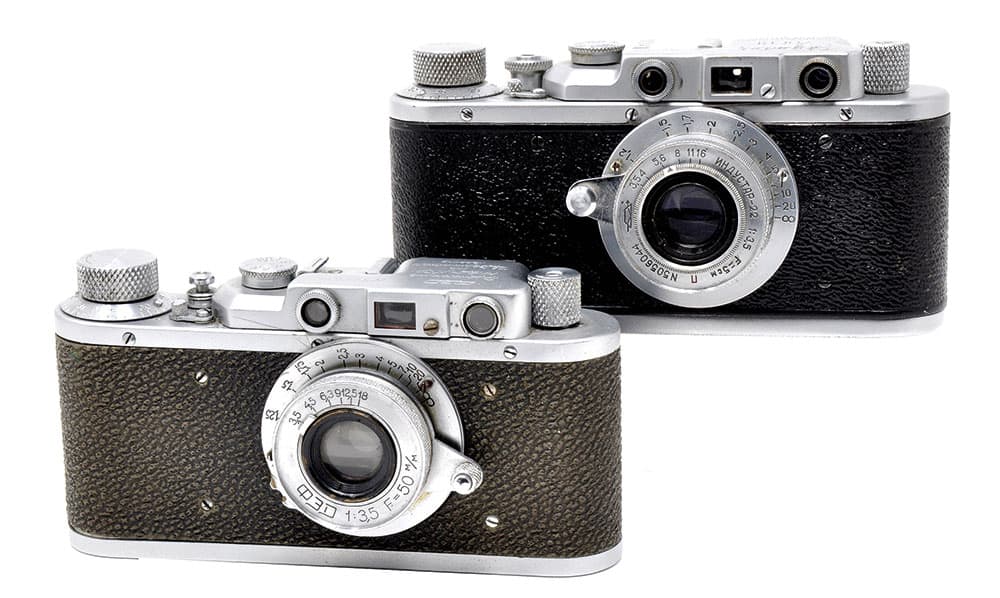
Fed lc (left) and Zorki ld – both copies of the Leica II
FED and Zorki
- Launched 1934 and 1948
- Guide price £25-£40
Do you fancy a Leica? Unfortunately, you won’t find one for under £50, but you can buy affordable Russian Fed or Zorki Leica copies. When Leitz introduced the Leica, it failed to patent the designs in Russia, hence FED and Zorki cameras, which were legally made copies. Each looks and operates like a Leica II with similar specifications: focal plane shutters, coupled rangefinders, f/3.5 lenses and shutter speeds of 1/20-1/500sec. Mechanically and optically they might not meet the high standards of the German originals, but they are usually reliable and their lenses have a reputation for quality.
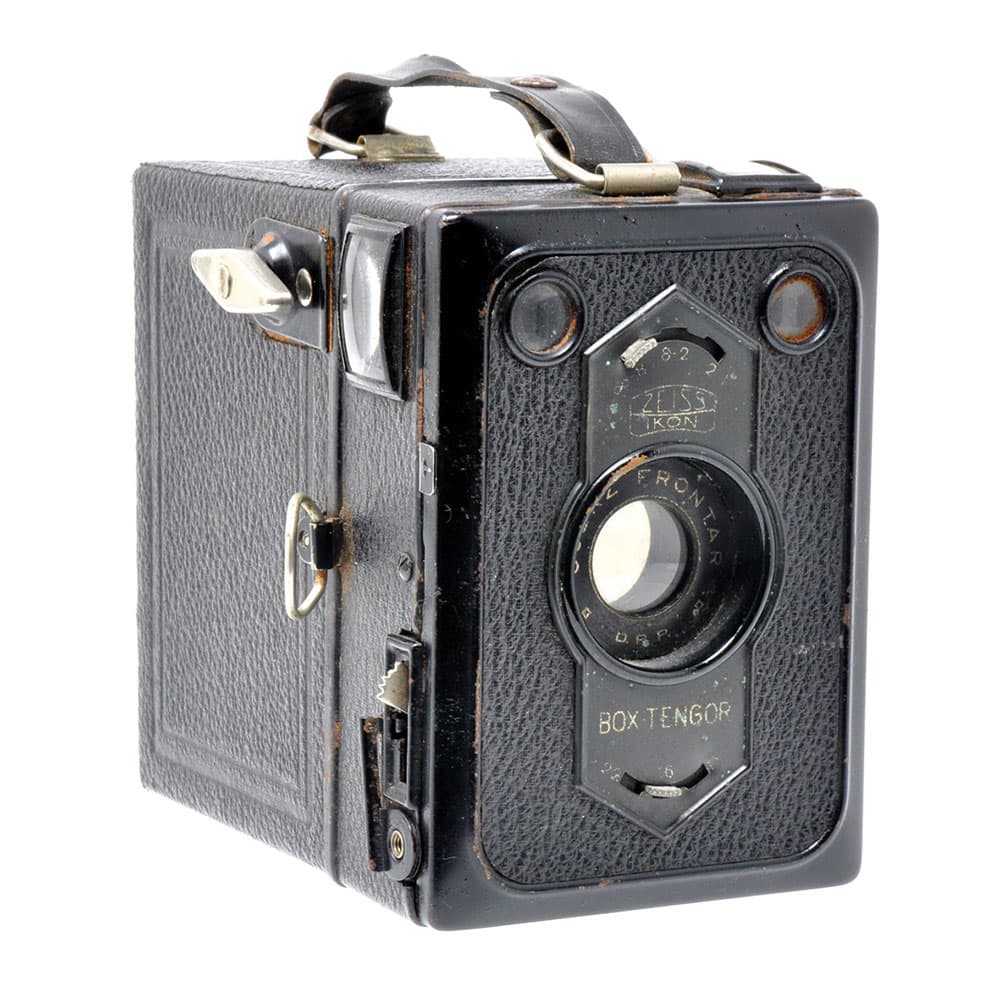
Zeiss Ikon Box Tengor, Type 54/2
Zeiss Box Tengor
- Launched 1934
- Guide price £10-£15
Box cameras were once a family favourite. You can pick one up for less than a pound at boot fairs. But if you want something with more than a basic specification, take a look at the Box Tengor range made by Zeiss Ikon. This 54/2 model has a focusing Goerz Frontar f/11 lens, fixed shutter speed, and three adjustable apertures, and it takes big 6x9cm images on 120 film.
Vintage cameras from £50-£100

Seagull 4B, Chinese Rolleicord copy
Seagull 4B
- Launched 1972
- Guide price £85-£95
Think twin lens reflex (TLR) and thoughts turn to the prohibitively expensive Rolleiflex. Even the Rolleicord, a stripped-down version of the Rolleiflex, still commands big money today. But the Rolleicord was copied by manufacturers around the world, and those copies are far more affordable. This version comes from China. It’s a good, traditional TLR with twin lenses for shooting and viewing, a large 6x6cm focusing screen on top of the body to match the size of the images on 120 rollfilm, a 75mm f/3.5 taking lens and a 1–1/300sec shutter speed range.
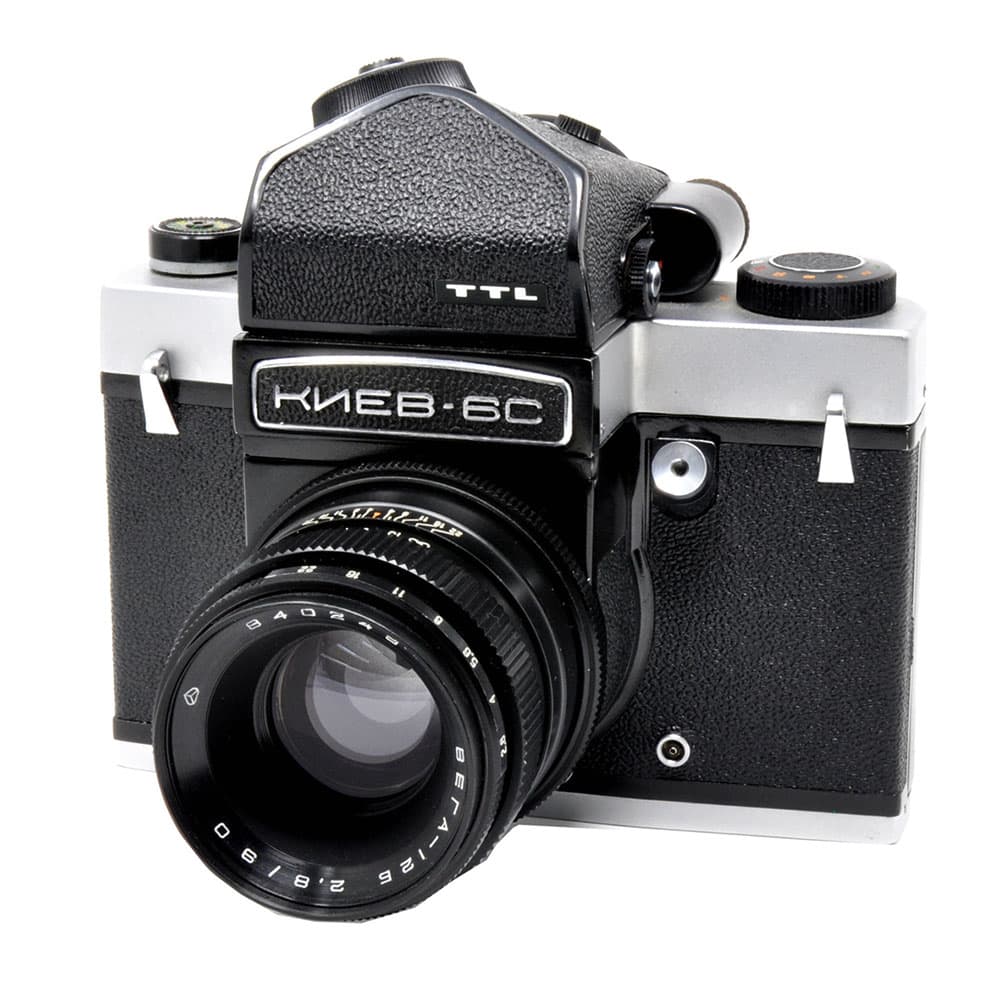
Kiev 6C, fitted with its eye-level TTL viewfinder
Kiev 6C
- Launched 1980
- Guide price £70-£90
Move into this price range and you can afford a medium-format rollfilm reflex such as the Russian-made Kiev. It’s big, it’s heavy and it shoots 12 6x6cm exposures on 120 rollfilm, or 24 exposures on 220 film. Usually found with a waist-level viewfinder, the addition of the TTL viewfinder gives eye-level, through-the-lens metering. The 90mm f/2.8 Vega standard lens is known for its sharpness, and the camera accepts accessory lenses via a mount that it shares with the Pentacon Six. The left-hand shutter release is a bit awkward and vibration from the huge mirror slapping up means it is best used on a tripod when shooting under 1/125sec.

Foca PF3, French 35mm rangefinder camera
Foca PF3
- Launched 1955
- Guide price £75-£90
Vintage 35mm rangefinder cameras are epitomised by German or Japanese manufacturers. But the French were active in this area, too, most notably with Foca cameras. This is the Foca PF3 (PF stands for Petit Format). While not an actual Leica copy, it shows Leica influences, with an Oplar 5cm f/3.5 lens that extends from the body for shooting, a top-mounted speed dial from 1/25-1/1000sec and a separate slow speed dial for 1-1/25sec on the front.
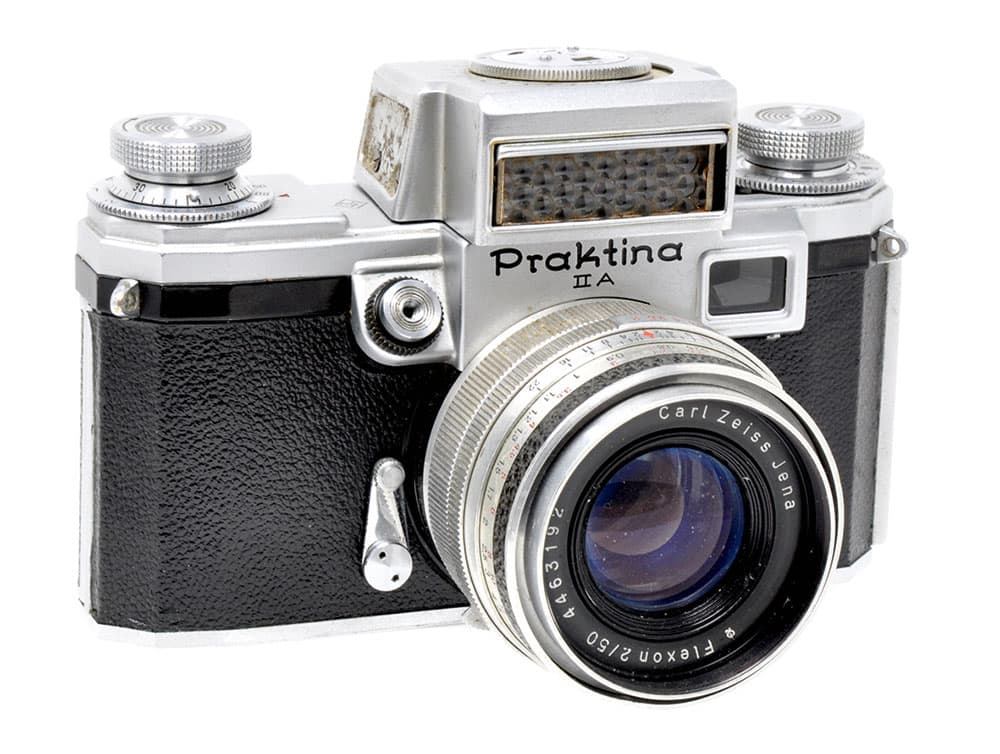
Praktina IIA fitted with its metered viewfinder
Praktina IIA
- Launched 1958
- Guide price £60-£80
The Nikon F, launched in 1959, is generally recognised as the first system 35mm SLR. But three years earlier, the East German Praktina FX was launched as part of a large system, and that was upgraded to the Praktina IIA a year before the Nikon F arrived. The camera sits at the centre of a huge range of accessories that includes waist-level, eye-level and high-magnification viewfinders; close-up devices; replaceable focusing screens; electric and clockwork motor drives; a stereo attachment and a huge film back that holds 17m of film. It’s seen here with its metered pentaprism viewfinder and Carl Zeiss Jena Flexon 50mm f/2 standard lens.
Vintage cameras from £100-£250

Contax IIIa, made by Zeiss Ikon after the Second World War
Contax IIIa
- Launched 1951
- Guide price £200-£220
Prior to the Second World War, Zeiss Ikon made the Contax I, II and III in Dresden. After the war, the company split and production was resumed in Stuttgart, where the cameras were relaunched as the Contax IIa and IIIa. The IIIa is the best of the five. A selenium meter mounted on top gives readings that are set manually. Focusing is by a small thumbwheel protruding from the top-plate and there’s a coupled rangefinder to ensure accuracy. The post-war Sonnar lenses usually found with the camera are superb.
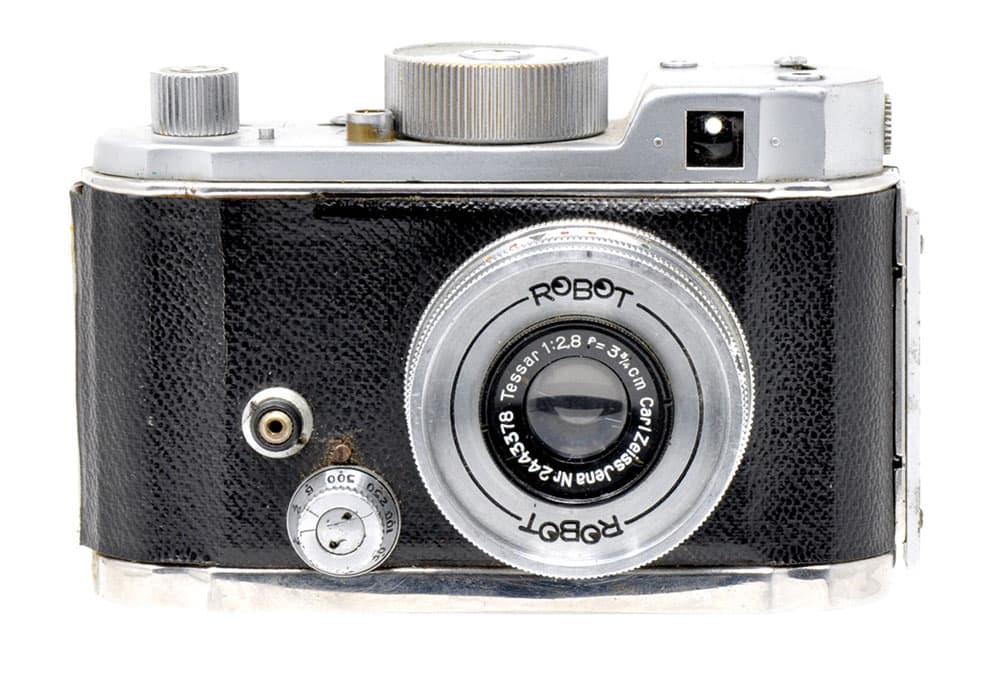
Robot II, with clockwork motor driver built in
Robot II
- Launched 1939
- Guide price £100-£150
In 1934, the Robot I brought built-in clockwork motor drives to 35mm cameras. That first model is the landmark that interests collectors, but non-standard film cassettes make it difficult to use today. The second model takes normal 35mm cassettes, producing more than 50 exposures 24x24mm to a roll. The motor is wound by a large knob on the top plate, after which the film automatically winds after each exposure. That makes it great for candid photography, which is further aided by a viewfinder that can be switched for use at 90° to the subject. A range of lenses includes the prestigious Tessar name.

Asahiflex IIb, first Japanese SLR with instant return mirror
Asahiflex IIb
- Launched 1951
- Guide price £150-£180
What makes this camera collectable is the fact that it was the first Japanese SLR with an instant return mirror. What makes it usable is that it takes normal 35mm film and offers an interesting and different way of shooting. Unlike most popular SLRs, it has a waist-level viewfinder, the screen of which is a bit small for general use. But that is backed by an eye-level optical finder. Usually found with a 50mm f/3.5 Takumar lens, it offers a shutter speeded 1/25-1/500sec. The camera also has its place in history as the predecessor of the Pentax.

Noviflex, first of the 6x6cm rollfilm reflexes
Noviflex
- Launched 1934
- Guide price £190-£210
This was the first medium-format rollfilm reflex that was made to take 12 exposures of 6x6cm on 120 film. Get hold of a Noviflex in good condition and it’s a delight to use, with a big waist-level viewfinder screen under a hood on top of the body, a wire-frame viewfinder that flips up for eye-level use, a 7.5cm f/3.5 lens focused by a knob on the side and a focal plane shutter speeded 1/50-1/1,000sec. The first model has a fixed lens, while later models had interchangeable lenses.
Vintage cameras from £250-£500

The Hulda is an unusual TLR that’s collectable and usable
Hulda 35
- Launched 1955
- Guide price £450-£500
Not every TLR takes rollfilm and positions its lenses one above the other. This is one of a very few that takes 35mm film, and places the shooting and viewing lenses side by side. That’s what makes it so collectable and its rarity makes it expensive. But it’s perfectly usable, too, with the viewing lens reflecting its image to a small screen on top of the body, beside an eye-level optical viewfinder. The Owla 4.5cm f/3.5 lens focuses in tandem with the viewing lens and shutter speeds run 1-1/200sec. The camera was originally launched in Japan as the Toyoca 35; Hulda is a rare name variant.

Bessa II: a quality medium-format folding camera
Voigtländer Bessa II
- Launched 1950
- Guide price £375-£400
This is one of the best folding cameras around. A drop-down bed unfolds from the body as the lens self-erects for immediate use. The Color-Heliar 105mm f/3.5 lens is renowned for its excellence, and quality is enhanced even more by the large 6x9cm image on 120 rollfilm. Turning a knob on the top plate focuses the lens, aided by a coupled rangefinder. A lever that emerges from the bed as the camera is unfolded releases the shutter. Pay a little less with the Color-Skopar lens and a lot more with an APO-Lanthar.
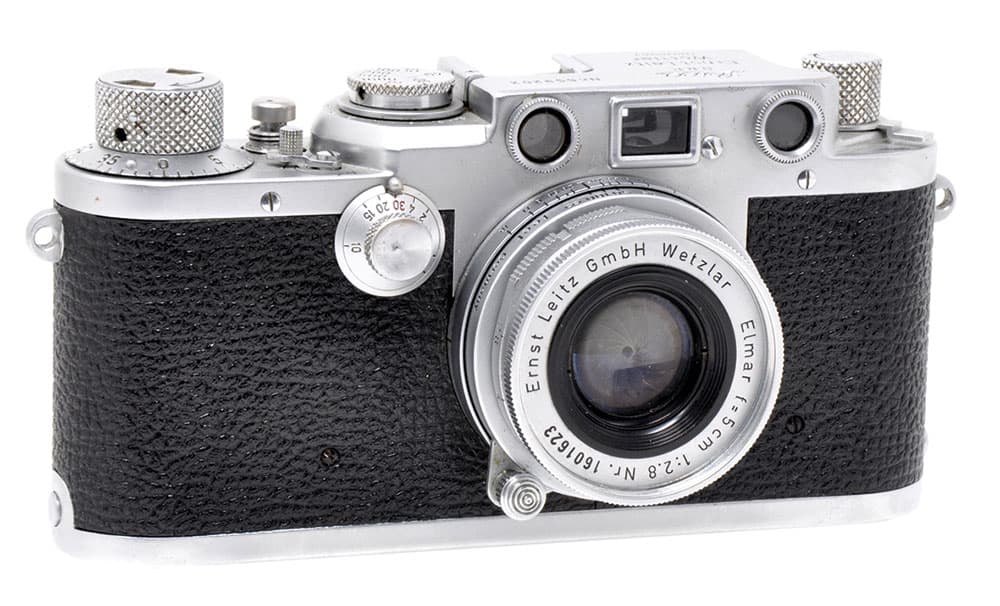
Leica IIIf, one of the last screw-lens cameras from Leitz
Leica IIIf
- Launched 1950
- Guide price £300-£350
The last screw-lens camera produced by Leitz, before the completely revamped Leica M3, offers a coupled rangefinder, slow speeds down to one second and compatibility with all Leica screw-fit lenses and accessories. This is the early version defined by its black flash-sync dial. A new version in 1952, with a red dial, features a lighter shutter and new speeds that conform more to international standards. The Leica IIIg, the very last of the screw-lens models, arrived three years after the M3 and commands up to three times the price of a IIIf.
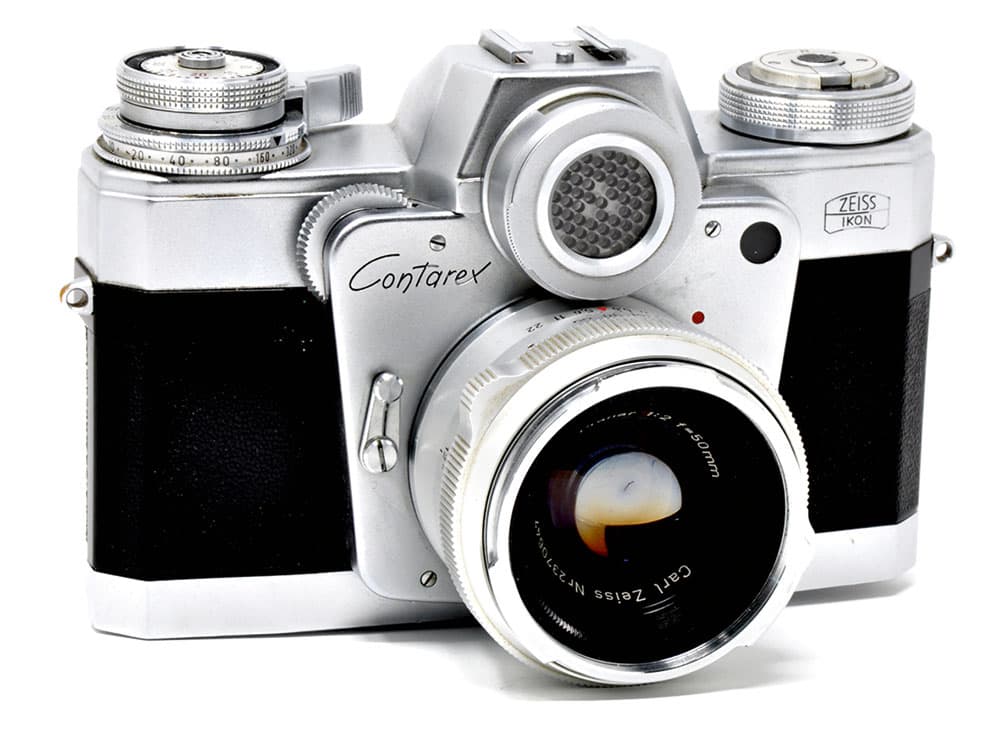
Zeiss Ikon Contarex, alias the Bullseye
Contarex
- Launched 1960
- Guide price £300-£350
Made by Zeiss Ikon, this camera has earned the nickname of the ‘Bullseye’, owing to the round meter cell above the lens. Apertures are shown in a window above the meter, controlled by a thumb wheel beside the lens. Speeds of 1-1/1000sec are set on a ring around the film advance lever, as match-needle metering indicates correct exposure in the viewfinder and a top-plate window. The body accepts an interchangeable film back and the available bayonet-mount lenses include Planars, Distagons, Sonnars and Tessars from 21mm to 500mm.
Vintage cameras from £500-£1000
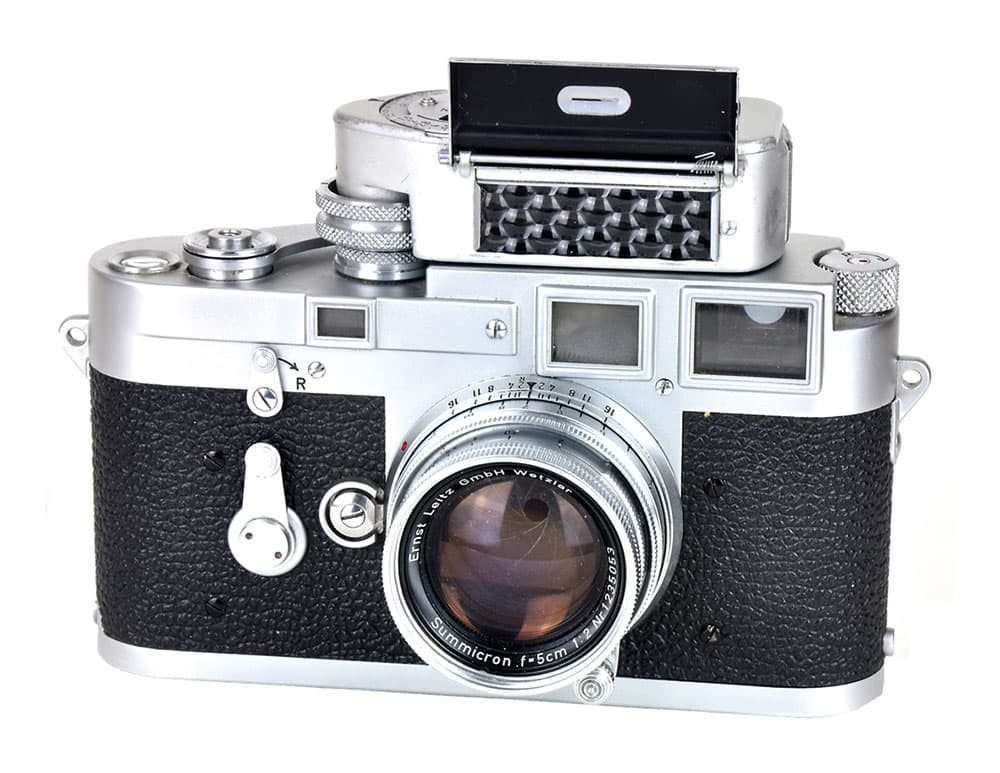
Leica M3 with its Leica M meter fitted
Leica M3
- Launched 1954
- Guide price £800-£950
This camera represented a total design rethink for Leica. Out went screw lenses, in came a new bayonet mount; a longer rangefinder base offered more accurate focusing; and bright frames for 50mm, 90mm and 135mm lenses appeared in the viewfinder. It’s a manual camera, but a Leica M meter slips into the accessory shoe and couples with the shutter speed dial to measure exposure. Early cameras need two lever strokes to wind the film; later models require only one. It’s a top-quality camera surrounded by a huge range of lenses and accessories.
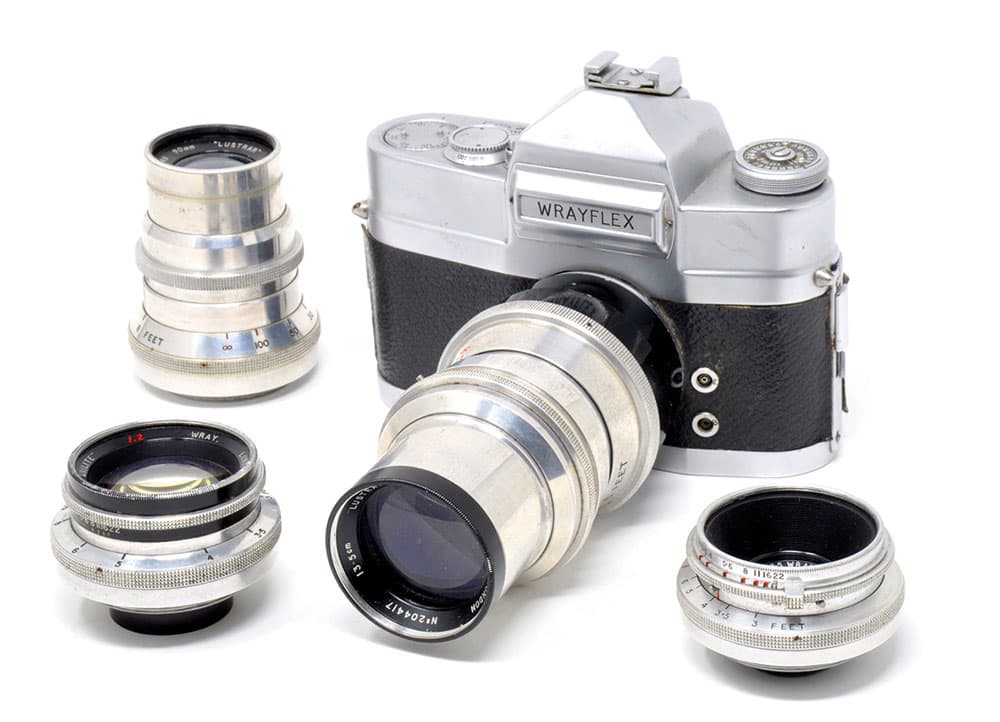
Wrayflex II with 135mm telephoto fitted, plus 90mm, 50mm and 35mm lens
Wrayflex II
- Launched 1959
- Guide price Camera: £600-£750; lenses: £150-£300 each
The Wrayflex was England’s only attempt at producing a 35mm SLR. The Wrayflex I and Ia in 1951 and 1953 used mirrors in the viewfinder that laterally reversed the image. But that problem was corrected in the Wrayflex II with a more conventional pentaprism. Wray made 50mm f/2 and f/2.8 standard lenses, a 35mm wideangle, 90mm portrait and 135mm telephoto for the camera’s unique screw mount, and the focal plane shutter offers 1/2-1/1000sec speeds. All this makes it an interesting collectable that is usable today. Back in 1959, its star was eclipsed by the arrival, the same year, of the Nikon F.
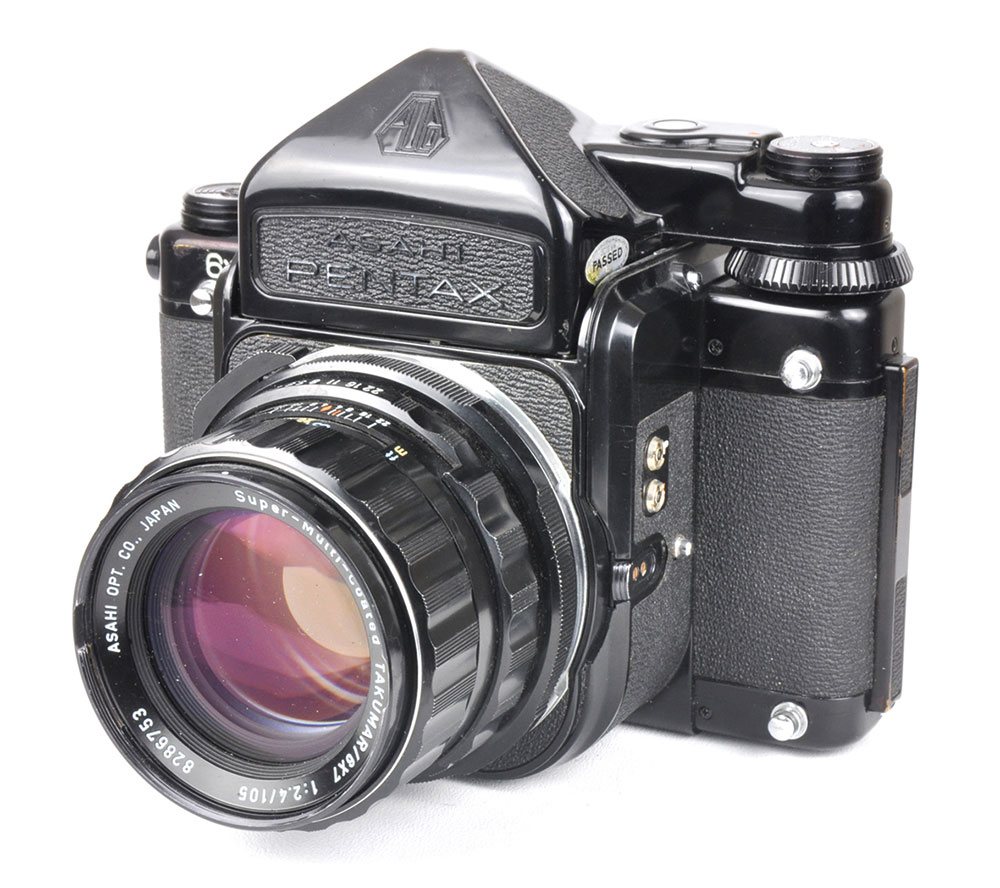
Pentax 6×7, handles like a big 35mm SLR
Pentax 6×7
- Launched 1969
- Guide price £650-£700
If you’re looking for a top-quality medium-format SLR that handles like a 35mm camera, only a lot bigger, this is the camera for you. It uses 120 or 220 film to shoot 10 or 20 images at 6x7cm. Available lenses range from 35mm fisheye, through 90mm standard, to 1,000mm telephoto, as well as 55-100mm and 90-180mm zooms. Eye-level metered and non-metered viewfinders plus a waist-level type are available. The camera is best used on a tripod.
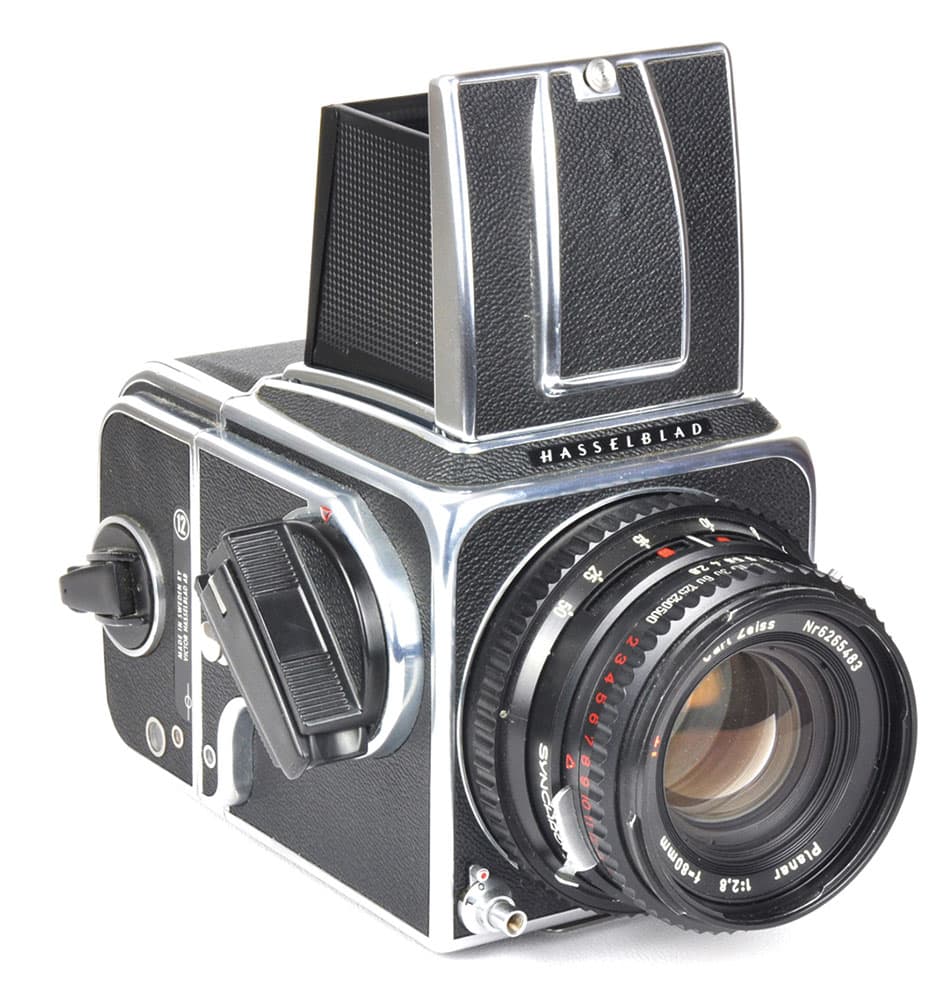
Hasselblad 500CM, high-quality rollfilm SLR
Hasselblad 500CM
- Launched 1970
- Guide price £80-£1,000
Unlike earlier Hasselblads that used focal-plane shutters, the CM has a leaf shutter, speeded 1-1/500sec, built into each of its lenses. The camera uses a modular design that breaks down into a body, lens, viewfinder and film back. Operation is entirely manual and a wide range of accessories is available. The CM is notable for the ease with which its focusing screens can be exchanged. It’s worth seeking out one that has had the special bright screen fitted, increasing screen brightness by at least one, maybe two, stops.
[breakout]
Choosing and using
Without specialised testing equipment on hand, there are a few basic checks you can still make to discover if a vintage camera is right for you and to get a general idea of its functionality.
- For ease of use, stick to vintage cameras that take 35mm or 120 rollfilm.
- Some older cameras have very small viewfinders – make sure the one you have chosen is easy and practical to use.
- Check that shutter speeds sound accurate, especially the slow speeds that tend to stick on older cameras.
- Make sure the aperture and focusing controls turn easily and smoothly.
- Try out built-in meters, to see if they react appropriately in a variety of different light levels.
- If the camera has a rangefinder, make sure the images coincide correctly at infinity.
- Examine the lens for serious scratches, cloudiness or signs of fungus on the internal elements. A few light scratches on the front surface won’t affect pictures too much.
- Look for signs of deterioration in bellows, particularly at the corners.
- With folding vintage cameras, check that the front lens panel remains parallel to the film plane when it is unfolded.
- Make sure glass focusing screens are not cracked, or even missing.[/breakout]
[breakout]
[collection name=”small”]
Where to buy
Classic camera auctions
- Aston’s Auctioneers and Valuers: www.astonsauctioneers.co.uk
- Flints: www.flintsauctions.com
- Special Auction Services (SAS): www.specialauctionservices.com
- More auctioneers listed at www.the-saleroom.com
Classic camera dealers
- Collectable Cameras: www.collectablecameras.com
- MW Classic Cameras: www.mwclassic.com
- Peter Loy: www.peterloy.com
- The Real Camera Company: www.realcamera.co.uk
- Google classic camera dealers for more.
Online
Camera Fairs
- Good list of fairs across the UK at www.nanites.co.uk/camera-fairs-2018.html [/breakout]

